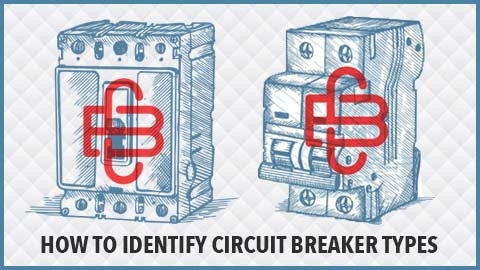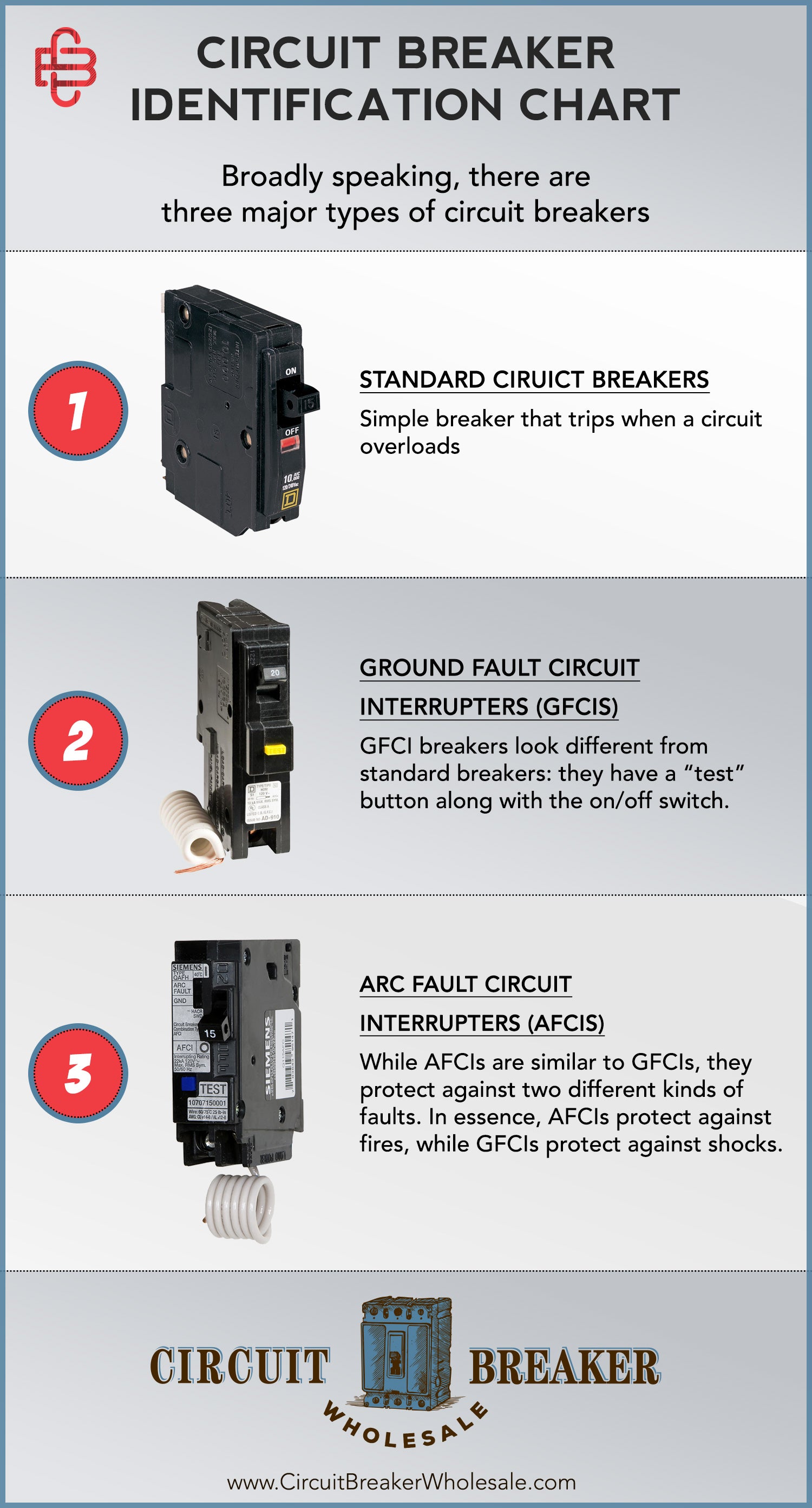How to Identify Circuit Breaker Types
Here’s a common scenario: You need to buy a replacement or additional circuit breaker for your panel. As soon as you start shopping around, however, you become aware that there are thousands and thousands of types of breakers from which to choose. For commercial or industrial panels, this lofty number can be even larger.
Buying circuit breakers is no trivial task, so how do you ensure you’re making the correct decision? As it turns out, picking the right one isn’t too complicated, and it all starts with learning how to identify different types of circuit breakers.
Circuit Breaker Identification 101

Broadly speaking, there are three major types of circuit breakers: standard, ground fault circuit interrupters (GFCIs), and arc fault circuit interrupters (AFCIs). Let’s take a closer look at these three.
- Standard Circuit Breakers
When you imagine a simple breaker that trips when a circuit overloads, you’re probably thinking of a standard circuit breaker. Depending on the function (whether your protecting overhead lights vs. a washing machine, or a residential vs. a commercial circuit) you will need either a single-pole or double-pole breaker. 1-inch breakers found in residential homes are typically single-pole breakers and occupy one slot on the panel. Double-pole breakers are more common for large residential appliances or commercial facilities, and take up two slots.
- GFCIs
In wet areas such as kitchens, bathrooms, or in damp industrial conditions, you will often encounter outlets with two buttons on them (“test” and “reset”) — these are protected by a GFCI breaker. GFCI breakers look different from standard breakers: they have a “test” button along with the on/off switch.
- AFCIs
These breakers protect from discharges that can cause electrical fires from risks like old wiring systems. Like GFCIs, they also feature a “test” button. While AFCIs are similar to GFCIs, they protect against two different kinds of faults. In essence, AFCIs protect against fires, while GFCIs protect against shocks.

Beyond these groupings of breakers, you may also encounter units sorted by low, medium, and high voltage, new and used circuit breakers, reconditioned breakers, and more. After you identify the category of breaker, you’ll need to determine other important features, including:
- Amperage
- Voltage
- Brand/Manufacturer
- Frame Type
- Series
- Connection Type
Be aware that for different brands, specs, and functions, these breakers and their identifying features can and will look very different from each other. Square D circuit breakers, for example, are going to fit and function properly in a very specific set of panels. For obsolete, hard to find units like Westinghouse circuit breakers, this can lead to problems — nevertheless, it’s critical to find the exact right breaker to meet your needs for both utility and safety.
Always Confirm Your Selection With the Panel
Just because you’ve selected the exact right amperage, voltage, and function, that doesn’t necessarily mean you’ve picked the right circuit breaker. Identifying the panel type is just as important as choosing the correct amperage. Different panels will support different breakers based on manufacturing specification and physical fit. Do you have a 200 amp or 400 amp panel? You will usually find a label with appropriate breakers listed on the inside of the panel.
Accurately identifying circuit breakers can help you make the correct purchasing decision the first time, saving you time and money. When you buy circuit breakers through Circuit Breaker Wholesale, we’ll match you with the right part, guaranteed. Having trouble identifying an old breaker you have on hand? Give us a description, or better yet send us a picture, and we’ll help you identify even an old, worn out unit.




